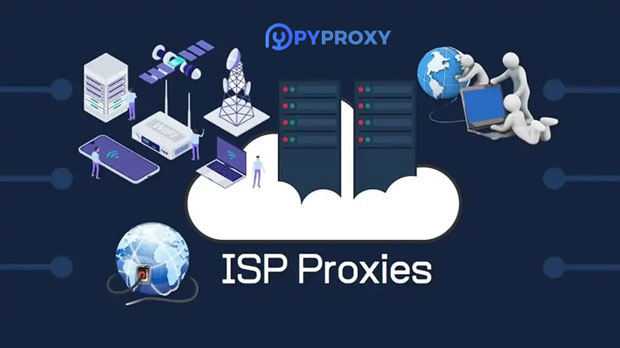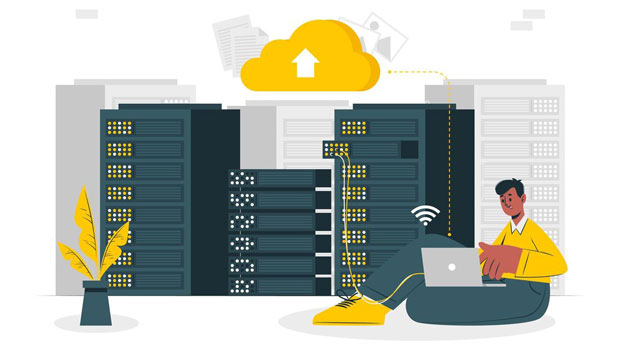When it comes to web scraping and data collection, having a stable and reliable connection is crucial. One option that is often considered for these tasks is a proxy server with a static IP. Proxy servers act as intermediaries between users and the internet, masking the user's original IP address and helping to protect their identity. Static IPs, in particular, offer a consistent address for long-term tasks, making them ideal for web crawling and data collection activities. But is a proxy server with a static IP truly the best option for such activities? In this article, we will explore this question in depth and analyze the advantages and limitations of using proxy servers with static IPs in data scraping tasks. Understanding Proxy Servers and Static IPsTo determine whether a proxy server with a static IP is suitable for web crawling and data collection, it's important first to understand what a proxy server and a static IP are. A proxy server is a system that acts as an intermediary between a client and the server from which they are retrieving data. This process hides the user's real IP address, replacing it with one from the proxy server. This can enhance security, improve privacy, and reduce the risk of getting blocked when accessing websites.A static IP, on the other hand, is an IP address that doesn't change over time. This is in contrast to a dynamic IP, which changes each time the connection is made. Static IPs provide a constant identity for online tasks, which is why they are often preferred for tasks that require long-term or consistent access, such as web scraping and data collection.The Role of Proxy Servers with Static IPs in Web CrawlingWeb crawling, also known as web scraping or data scraping, is the process of automatically extracting information from websites. This process can be used for various purposes, including research, competitive analysis, price monitoring, and more. However, web scraping often faces several challenges, such as IP blocking and rate-limiting, as websites try to prevent large-scale data extraction.Using a proxy server with a static IP can help mitigate these issues. By routing web scraping traffic through a proxy server, the original IP address of the crawler remains hidden, making it less likely to be blocked or flagged as suspicious. Furthermore, a static IP provides consistency, ensuring that the proxy server does not change, which is critical for maintaining ongoing web scraping operations over time.Advantages of Proxy Servers with Static IPs for Data Collection1. Stability and ReliabilityOne of the main advantages of using a proxy server with a static IP for web scraping is the stability it offers. Static IPs ensure that the IP address remains the same, which is essential for tasks that require constant access to a particular website or service. If you need to collect data over a long period, such as for continuous market analysis or research, a static IP ensures that the server's identity remains the same throughout the process.2. Reduced Risk of IP BansWebsites often detect and block IP addresses that make too many requests within a short time frame, particularly if they detect patterns that suggest automated data scraping. Dynamic IPs, which change constantly, can trigger suspicion and increase the likelihood of being banned. Static IPs, however, are less likely to be flagged, provided the scraping is done in moderation and with proper measures in place.3. Enhanced Privacy and AnonymityUsing a proxy server with a static IP can enhance both privacy and anonymity. Since the proxy server acts as an intermediary, your original IP address is concealed from the target website. This reduces the risk of exposing sensitive information and protects the identity of the crawler.4. Geolocation ControlIn some cases, web scraping may require the crawler to appear as though it's accessing the website from a particular geographical location. A static IP can be sourced from a specific country or region, offering control over the geolocation of the scraping activity. This is beneficial for tasks such as accessing region-specific data or testing local content.Limitations of Proxy Servers with Static IPs for Data Collection1. Cost ConsiderationsWhile proxy servers with static IPs offer numerous benefits, they are often more expensive than other types of proxies, particularly dynamic ip proxies. Static IP proxies require maintenance, and they may involve additional costs related to the management of dedicated IPs. This can be a consideration for businesses or individuals working with tight budgets.2. Detection by Advanced Anti-Scraping SystemsThough static IPs can reduce the risk of being blocked compared to dynamic IPs, they are still susceptible to detection by advanced anti-scraping systems. Websites may monitor the behavior of IPs over time and identify patterns that suggest automated scraping. Therefore, even with a static IP, it is crucial to employ additional strategies, such as using CAPTCHA solving or rotating IP addresses, to avoid detection.3. Limited IP PoolWith a static IP, the number of available IP addresses is fixed, which limits scalability. If a web scraping project requires accessing a large number of different websites simultaneously or making numerous requests at the same time, having just one static IP may not be sufficient. In such cases, dynamic IP proxies or rotating proxies might be more appropriate.Best Practices for Using Proxy Servers with Static IPs in Data Collection1. Rate Limiting and ThrottlingTo avoid being detected by anti-scraping systems, it is important to implement proper rate limiting and throttling techniques. This involves controlling the speed and frequency of requests to avoid overwhelming the target website. Even with a static IP, making too many requests in a short time could lead to temporary or permanent bans.2. Use of CAPTCHA Bypass SolutionsMany websites use CAPTCHAs to prevent automated access. Proxy servers with static IPs can work in tandem with CAPTCHA bypass solutions, such as CAPTCHA solvers or human-in-the-loop services, to ensure that data collection continues without interruption.3. Combining Static IPs with Rotating ProxiesIn some cases, combining a static IP with rotating proxies can provide the best of both worlds. The static IP ensures stable access, while rotating proxies help distribute the requests across multiple IPs, further reducing the risk of detection.ConclusionProxy servers with static IPs can be a highly effective tool for web crawling and data collection, offering benefits such as stability, reduced risk of IP bans, enhanced privacy, and geolocation control. However, they also come with limitations, including cost considerations and the potential for detection by advanced anti-scraping systems. By following best practices such as rate limiting, CAPTCHA bypassing, and combining static IPs with rotating proxies, businesses and individuals can maximize the effectiveness of their data collection efforts while minimizing the risk of being blocked.
Aug 18, 2025


































































